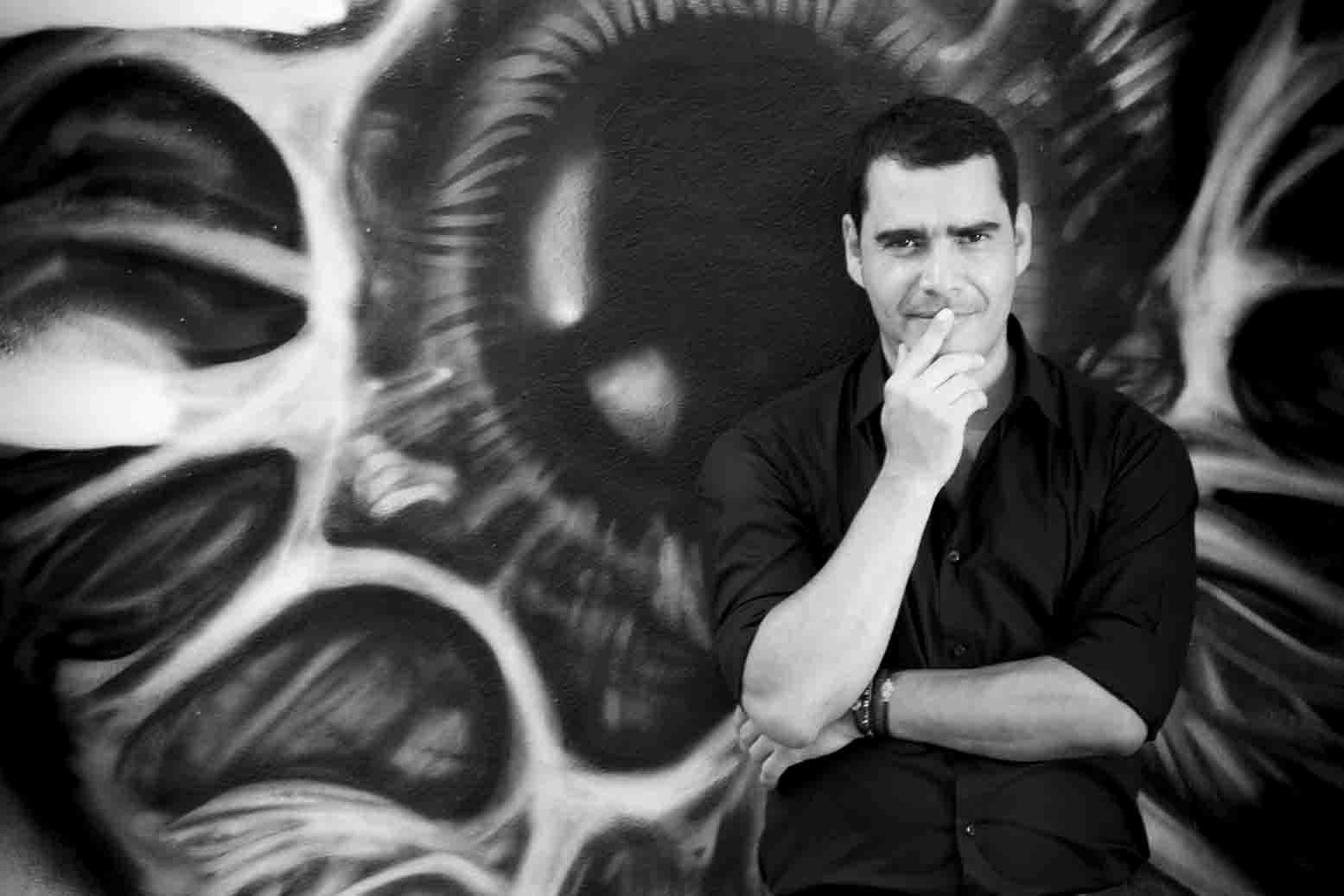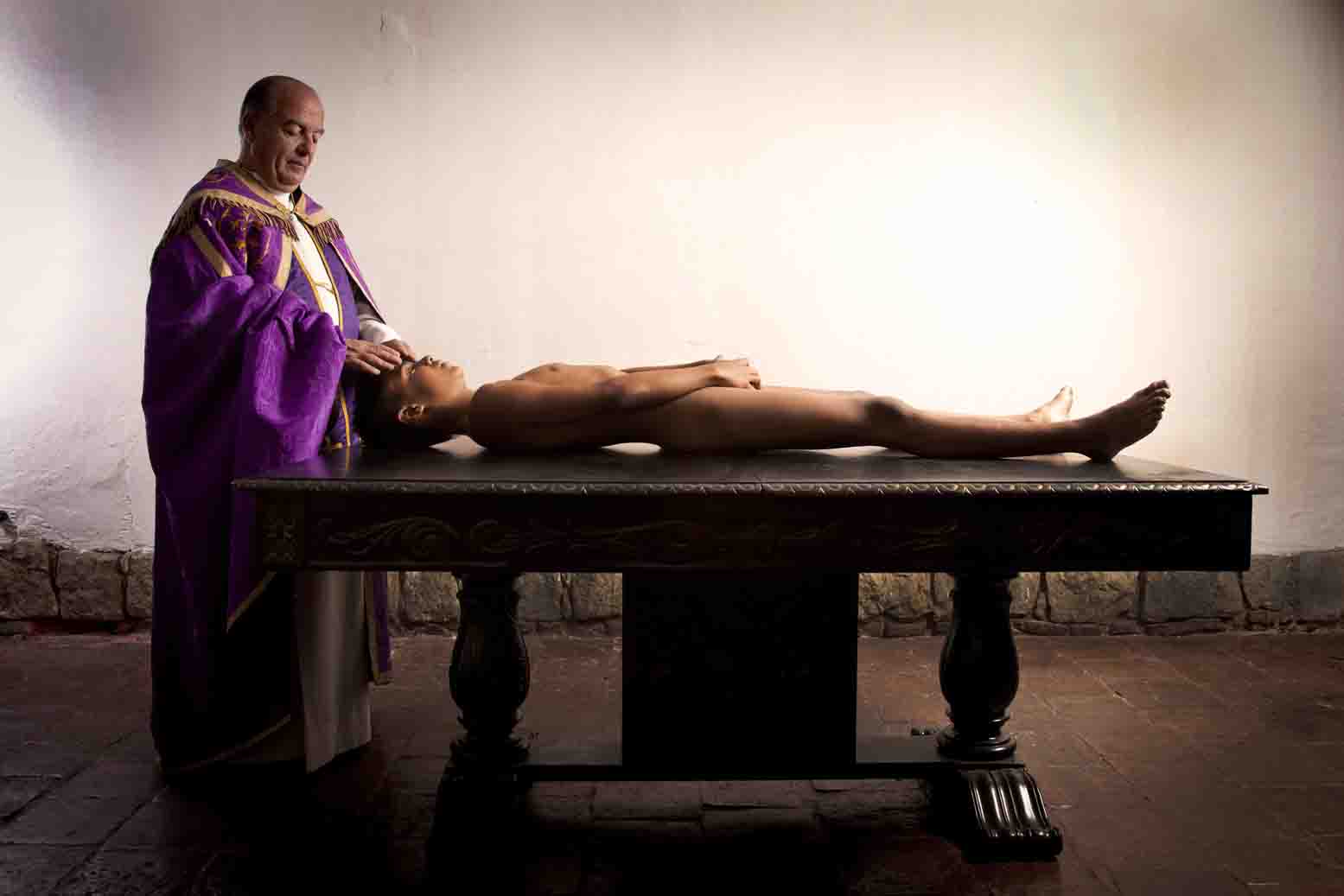
15 May Mauricio Velez, a Passion for the Lens
Author : By Romain Méfret
Mauricio Velez, a photographer who is passionate about culture and religion, is intriguing because he plays with conventions. His eye transforms the human body into a “canvas” and turns it into an object and an encounter.
Can you tell readers who aren’t acquainted with you about your professional experience?
I have been a photographer for 28 years and I was trained at the European Institute of Design in Italy. Since then, I have worked on a very large number of projects in Latin America, the United States and Spain, offering, through my personal prism, images meant to refine the sensitivity and perception of the viewer towards religious icons, art and the human body, for example, in an attempt to unify them and elevate them to an aesthetic level that can either inspire or disturb, but whose intention it is to confront the viewer with an image.
Where did your passion for photography come from?
I took my first photograph at the age of 14, and since that day, I have never stopped working on images. I am interested in many subjects and devote all my time and attention to art and literature, which are the basis for my inspiration which then allows me to access a “mental space” where I can create freely and translate into images all my dreams.

How do you choose your subjects? What techniques do you use?
I took my first photograph at the age of 14, and since that day, I have never stopped working on images. I am interested in many subjects and devote all my time and attention to art and literature, which are the basis for my inspiration which then allows me to access a “mental space” where I can create freely and translate into images all my dreams.
How do you choose your subjects? What techniques do you use?
When I was very young, I was already intrigued by a large number of subjects, which led me to undertake an exploration that I put a lot of effort into. I like images that contain a deep and strong human content, which can lead you one way or another, depending on the different human perspectives attached to them.
From a purely technical point of view, I have used just about every possible technique, from analog to large format digital, which is also the technique that I am currently using.
You seem to be attached to your Colombian heritage. In regards to the Latin American culture, should we view your photos as a tribute to your homeland? By extension, are you trying to show that there is a Colombian culture and that it should be promoted?
Our Latin American and Columbian culture is extremely rich. There are many things to see and share with the rest of the world and it has a special place in global art. We still have a lot to offer as to who we are and we are convinced that this will be received with great interest. Globalization has taught us to rid our aesthetic concepts of their “local” dimension, so as to make them accessible and “decipherable” in any part of the world.
Your work “Half-Angel Half-Demon” speaks enigmatically to the viewer. Could you give us its key?
Many issues challenge us, indeed, but aside from the fact that they are difficult to digest due to the social impact they have on us – as, for example, those which raise sensitive issues like religion, topics that are expressed through the image of the human body used as a “canvas”, or when they show something that is related to what we call “homosexuality” – things that create a huge impact, especially since these are subjects that have never before been discussed through photographic images.
What I tried to do in this exhibition is establish a relationship with my vision of this particular way of living life as a human being. In other words, humanity is made up of beings that are half-angel, half-demon, regardless of the true nature of each one of us and what that implies.
Does religion play a role in your work?
Religion is one of the fundamental pillars of our society and I think it is responsible for how see it today. I totally respect believers and I think that each one of them is worthy of respect, but I also think that no subject should be taboo when it comes to artistic expression, in other words, nothing in art, should be prohibited.
What I tried to do in this exhibition is establish a relationship with my vision of this particular way of living life as a human being. In other words, humanity is made up of beings that are half-angel, half-demon, regardless of the true nature of each one of us and what that implies.
What are you working on currently? What are your immediate projects?
I just finished a book that was recently published, which presents portraits of key figures in the development of modern Colombian society. This book is beautifully designed for display on living room coffee tables. At this point, I believe that a book should be “an experience in itself” that breaks with a form of reading that the “Digital World” feeds us daily and that has become both easy and trite. This book was designed not only to have a major visual impact on the reader, but also to generate a shock about our own culture, and, from now on, it will embody the image that the world has of Colombians. I am currently working on a project that has been on my mind for over twenty years, namely a photographic version of Don Quixote de la Mancha. I want to make this masterpiece of world literature more accessible to younger generations, using an approach full of human content, which is the only “key” we need, it seems to me, for dreaming and believing again in our troubled world.
If you had to choose one word to define what you do, what would it be?
It would be the word “passion”.


